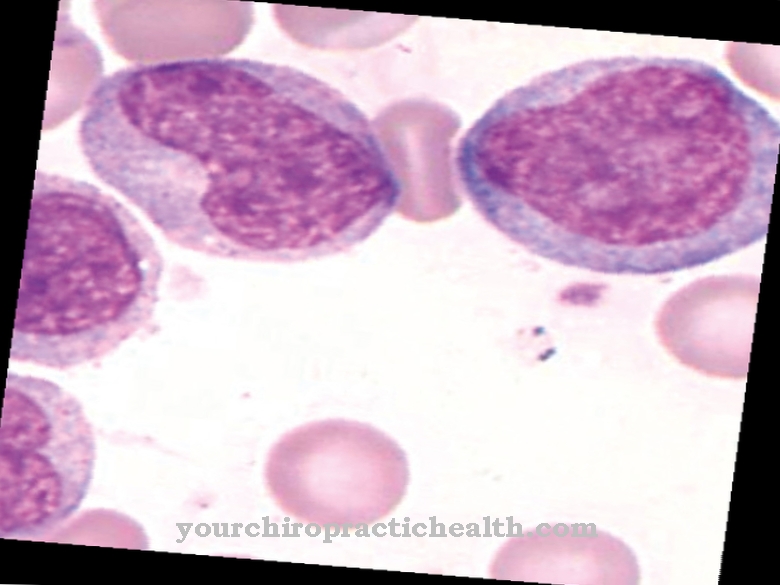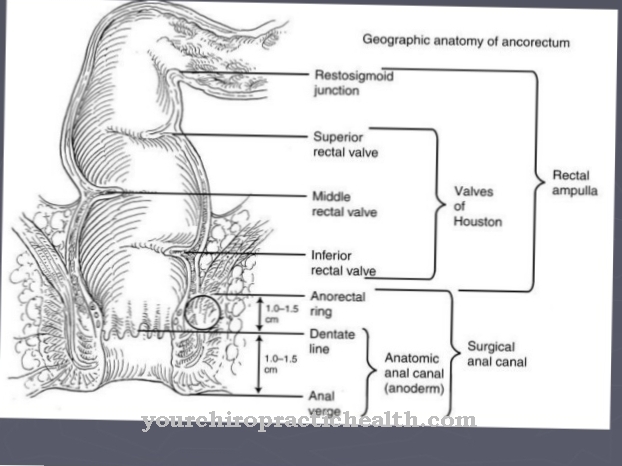As Superior mesenteric artery will the upper viscera artery designated. It supplies blood to several important areas of the body.
What is the superior mesenteric artery?
The superior mesenteric artery is the superior intestinal artery. It represents an unpaired branch of the main artery (aorta). This branch is located directly behind the exit of the Truncus celiacus (Hallerscher tripod), with which the aorta mesenterica superior forms the second unpaired branch of the aorta abdominalis. The first unpaired branch is marked by the celiac trunk.
The tasks of the upper intestinal artery include supplying several areas of the body with blood. Occasionally, diseases also occur in the artery. This primarily includes mesenteric artery stenosis.
Anatomy & structure
The superior mesenteric artery has its origin behind the neck of the pancreas (pancreas) between the renal arteries and the trunk of the celiac trunk. It is roughly level with the first lumbar vertebra. In domestic animals the origin of the artery lies behind the arteria coeliaca and is called Arteria mesenterica cranialis, which means "intestinal artery located towards the skull".
The Riolan anastomosis provides a connection between the superior mesenteric artery and the inferior intestinal artery (inferior mesenteric artery). The upper viscera artery emerges from the main artery near the 1st lumbar vertebra. From there it runs in the front and bottom directions. It passes the neck section of the pancreas and the vena splenica (splenic vein).
Various structures exist between the aorta and the superior mesenteric artery. These include the uncinate process of the pancreas, the pars horizontalis of the duodenum (duodenum) and the left renal vein (vena renalis sinister). The superior intestinal artery is accompanied on its way by the superior mesenteric vein, which is an inflow branch of the portal vein (vena portae).
Following the passage of the pancreatic neck, the superior mesenteric artery divides, which divides into several branches. These are the middle large intestinal artery (Arteria colica media), the right large intestinal artery (Arteria colica dextra), the iliac and colon arteries (Arteria ileocolica), the anterior caecal artery (Arteria caecalis anterior), the posterior caecal artery (Arteria caecalis posterior) and the artery of the appendix appendix (appendicular artery).
Another important branch is the pancreatic and duodenal artery (arteria pancreaticoduodenalis inferior). This is equipped with a right and a left branch and together with the branches of the right large intestinal artery forms the arteria marginalis coli. This is located near the large intestine and provides its blood supply.
Function & tasks
The task of the superior mesenteric artery is to supply various organs with blood. These are the pancreas, the duodenum, the small intestine (intestinum tenue), the ascending colon (colon) and the transverse colon (colon transversum).
The upper intestinal artery also provides the blood supply to the appendix vermiformis, which forms the appendix of the appendix and is known for its notorious inflammation, which is often incorrectly called appendicitis. The approximately 10 centimeters long worm-like appendix, however, only represents the protrusion of the appendix (caecum).
You can find your medication here
➔ Medicines for stomach ailments and painDiseases
Impairments to the superior mesenteric artery can cause health problems. This includes above all mesenteric artery stenosis, also known as mesenteric occlusive disease or mesenteric artery occlusion.
This leads to a narrowing (stenosis) or even closure of the upper intestinal artery. In the case of a complete occlusion of a mesenteric vessel, which is associated with necrosis of the affected intestinal region, doctors speak of an intestinal or mesenteric infarction. Mesenteric occlusive disease is usually caused by a local arterial thrombosis or an arterial embolism in the area of the superior mesenteric artery, the inferior mesenteric artery and the celiac trunk.
There are certain risk factors that promote stenosis of the superior intestinal artery. These are hardening of the arteries (arteriosclerosis), cardiac arrhythmias as the source of an embolism, and previous operations on surrounding vessels such as an operation due to an abdominal aortic aneurysm. Mesenteric artery stenosis becomes noticeable through severe abdominal pain, which often takes a colic-like course.
After about six to eight hours, the pain will initially improve again. However, doctors refer to this as "deceptive peace" because dangerous peritonitis then develops, which after a short time leads to shock. Mesenteric artery stenosis can also take a chronic course. The patients suffer from recurrent colicky abdominal pain, loss of appetite and weight loss.
In the case of an acute occlusion of the mesenteric arteries, a laparoscopy is performed first. If an intestinal obstruction is suspected, an abdominal incision (laparotomy) must be performed. If there is no necrosis, the blood clot will be removed during the operation. In some cases, resection of ischemic-necrotic bowel areas may also be required. If the superior mesenteric artery is chronically occluded, the surgeon usually creates a bypass between the blood vessel and the main artery.
The superior mesenteric artery syndrome is a rare disease of the upper intestinal artery. What is meant is a compression syndrome, in which there is pain in the upper abdomen, nausea and vomiting. Because patients suffer from deficiency symptoms as a result, they are often mistakenly considered to be eating disorders. The superior mesenteric artery syndrome is also called syndrome of the upper mesenteric artery, acute gastroduodenal obstruction or Wilkie syndrome.
This leads to a stenosis in the distal duodenal area between the superior mesenteric artery and the main artery. The disease is caused by anatomical abnormalities, chronic weight loss, nutritional disorders or surgery. Treatment is either conservative through weight gain or surgery.
























.jpg)



